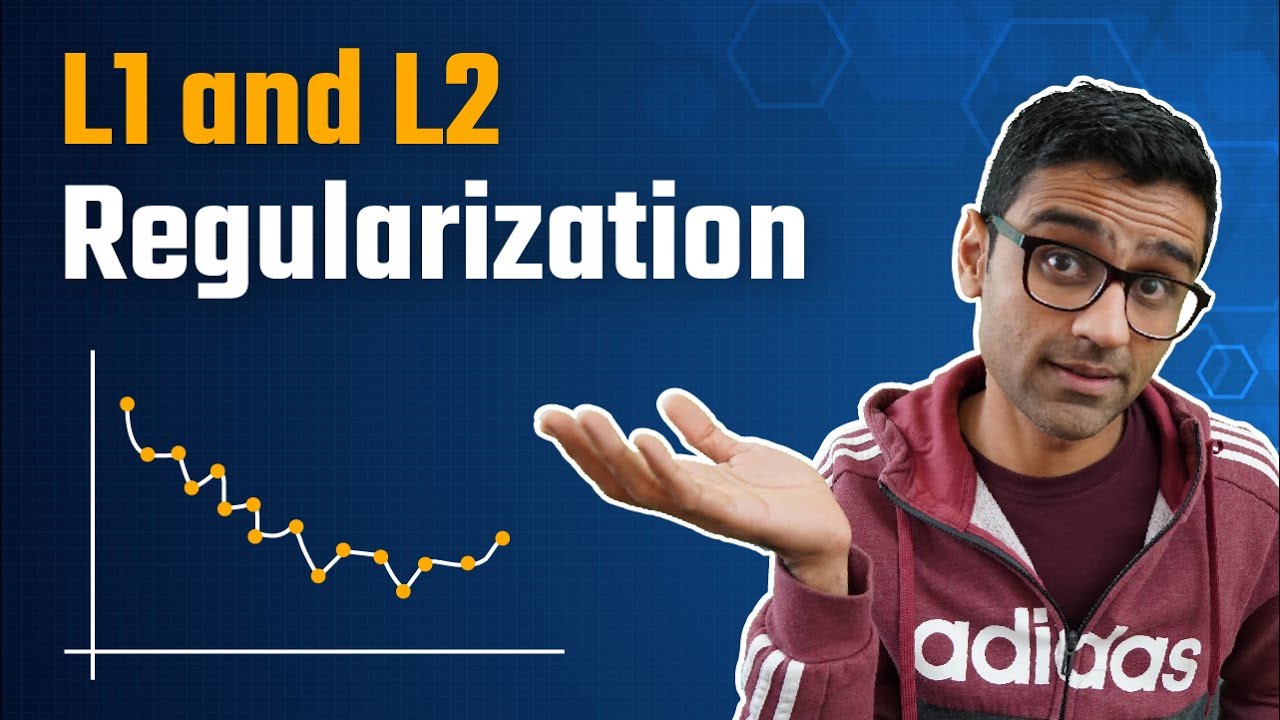Sharpness-Aware Minimization (SAM) in 7 minutes
Summary
TLDRThis video explains the concept of Sharpness-Aware Minimization (SAM) in machine learning, highlighting how it improves model generalization. The script breaks down how training a model involves minimizing a loss function, with techniques like gradient descent used to optimize it. SAM enhances this by penalizing sharp minima, favoring smoother, more generalizable solutions. The method is illustrated through a simple visualization, showing how SAM avoids sharp, suboptimal points in the loss landscape, leading to better overall performance. The results demonstrate significant improvements in error reduction for image classification tasks.
Takeaways
- 🧠 Machine learning model training fundamentally involves minimizing a loss function that measures the difference between predictions and true labels.
- 📉 Gradient descent and its variants, such as Adam, are the primary algorithms used to minimize loss functions in supervised learning.
- 🏞️ The optimization landscape is often unknown and complex, making it difficult to directly find the global optimum.
- ⚙️ Gradient descent moves in the direction of steepest descent, but large or inconsistent steps can lead to unstable, zigzagging convergence.
- 💨 Momentum-based optimization smooths the training path by incorporating previous gradient directions, leading to more stable convergence.
- 🧩 Despite smoother optimization, models can still get trapped in sharp local minima, which tend to generalize poorly to new data.
- 🌊 Research shows that flatter (smoother) minima in the loss landscape correspond to better model generalization performance.
- 🔍 The SAM (Sharpness-Aware Minimization) method penalizes sharp regions in the loss function by perturbing model parameters and measuring how much the loss increases.
- 🧮 SAM effectively minimizes both the loss value and the sharpness of the minimum, leading to smoother and more generalizable solutions.
- 🚀 Experiments show that SAM significantly improves performance on image classification tasks like CIFAR-10 and CIFAR-100, reducing error rates by up to 40%.
- 🧾 Conceptually, SAM adjusts the gradient descent step by evaluating the worst-case direction of perturbation and optimizing accordingly.
- 🎯 Overall, SAM enhances training stability and model robustness with minimal changes to standard optimization pipelines.
Q & A
What is Sharpness-Aware Minimization (SAM)?
-SAM is a technique in machine learning that aims to improve generalization by reducing the sharpness of the loss landscape. By adding a 'sharpness-aware' term to the loss function, it encourages smoother minima, which generally lead to better performance on unseen data.
Why is model training in machine learning considered minimization of a loss function?
-In supervised machine learning, training a model involves minimizing the difference (or 'loss') between the model's predictions and the true labels. The loss function quantifies how far off the predictions are, and the goal is to minimize this distance so the model can improve its accuracy.
What is the primary method used in current optimization techniques for training machine learning models?
-The primary method used is gradient descent or its variants, such as Adam. Gradient descent iteratively updates the model's parameters by moving in the direction that reduces the loss function, helping the model converge to an optimal solution.
What issue arises from using basic gradient descent in training models?
-A major issue with basic gradient descent is that it can lead to erratic, zigzag paths toward the minimum, especially in non-smooth or complex loss landscapes. This occurs because the model often takes steps that are too large or leads it to local minima.
How does momentum help improve the gradient descent process?
-Momentum helps by smoothing out the gradient updates. Instead of taking a new direction at each point based on the current gradient, momentum takes into account previous directions, reducing oscillations and helping the model move more smoothly toward the minimum.
What problem can arise even when using momentum during training?
-Even with momentum, the model can still get stuck in local sharp minima, especially in complex landscapes. This can happen because the gradient might incorrectly suggest that the model has reached the lowest point, even though it's just a local minimum.
What is the relationship between sharpness and model generalization?
-The theory suggests that sharper minima (i.e., points with steep loss surfaces) result in poorer generalization, as the model is more sensitive to small changes in the data. Smoother minima tend to generalize better and provide more robust performance on new, unseen data.
How does SAM differ from regularization techniques like L1 or L2 norms?
-SAM differs by focusing directly on the sharpness of the loss function at each point. While regularization techniques like L1 or L2 norms penalize large weights to smooth the model, SAM explicitly modifies the loss function by incorporating a term that penalizes sharp points in the landscape.
How does SAM evaluate sharpness in the loss function?
-SAM evaluates sharpness by perturbing the loss function in random directions and observing the worst-case increase in the loss. If the loss increases significantly in any direction, it indicates that the point is sharp and should be penalized, encouraging smoother, more generalizable minima.
What kind of results did the authors of the SAM paper observe in their experiments?
-The authors observed significant improvements in model performance, with error reductions ranging from 0% to 40% on datasets like CIFAR-10 and CIFAR-100. This shows that SAM can effectively reduce model errors and enhance performance by optimizing for smoother minima.
Outlines

此内容仅限付费用户访问。 请升级后访问。
立即升级Mindmap

此内容仅限付费用户访问。 请升级后访问。
立即升级Keywords

此内容仅限付费用户访问。 请升级后访问。
立即升级Highlights

此内容仅限付费用户访问。 请升级后访问。
立即升级Transcripts

此内容仅限付费用户访问。 请升级后访问。
立即升级浏览更多相关视频

Machine Learning Intro 4

Machine Learning vs Deep Learning

Machine Learning Tutorial Python - 17: L1 and L2 Regularization | Lasso, Ridge Regression

But How Does ChatGPT Actually Work?

AZ-900 Episode 16 | Azure Artificial Intelligence (AI) Services | Machine Learning Studio & Service

Regulaziation in Machine Learning | L1 and L2 Regularization | Data Science | Edureka
5.0 / 5 (0 votes)
